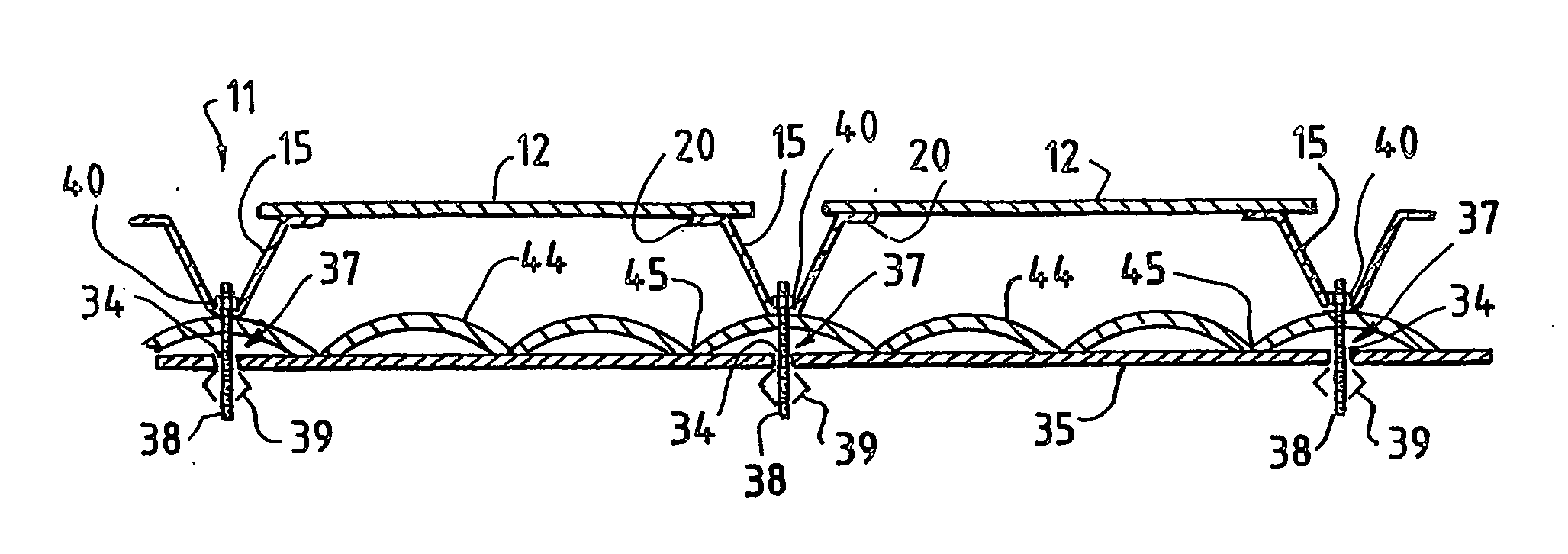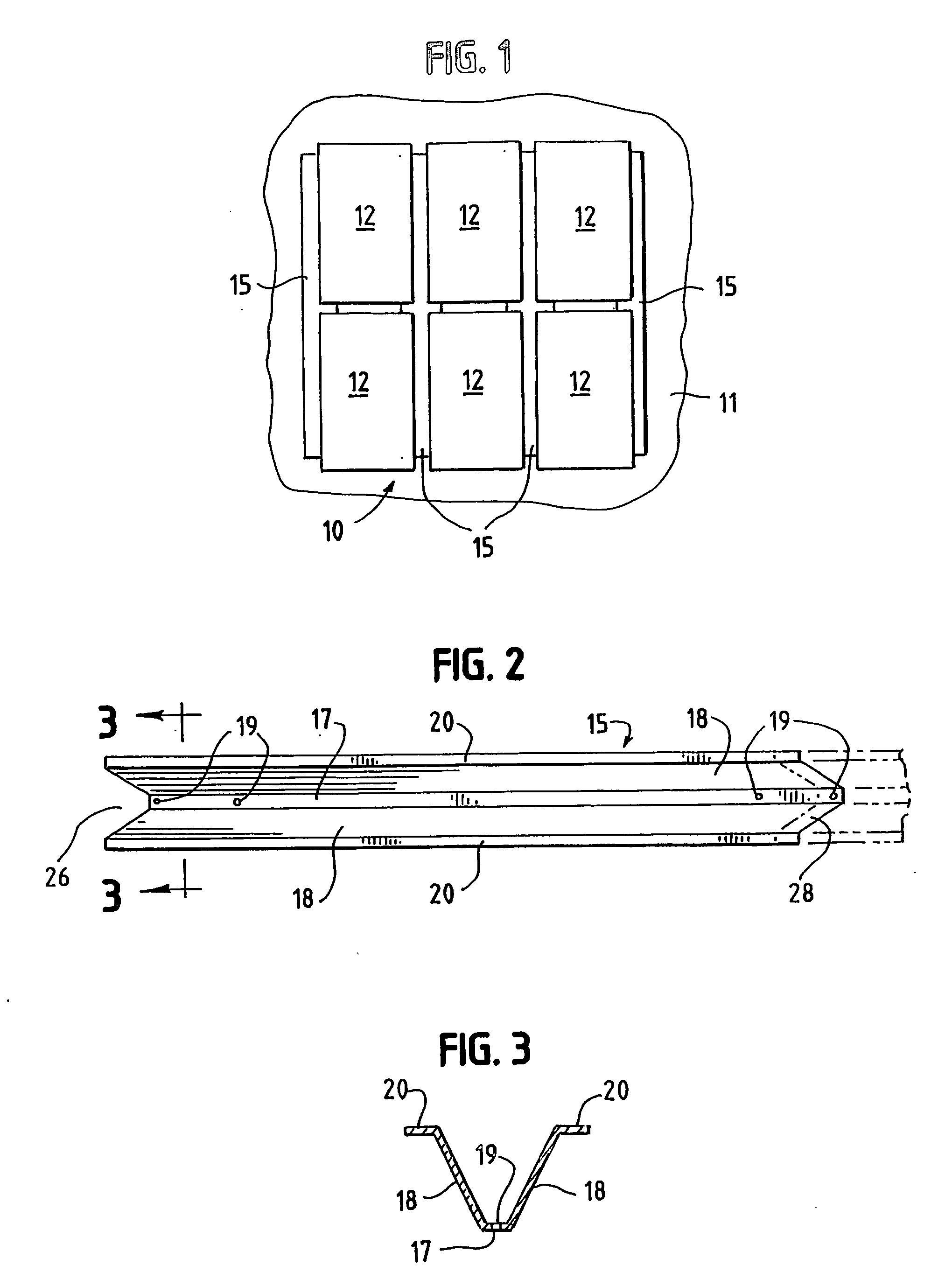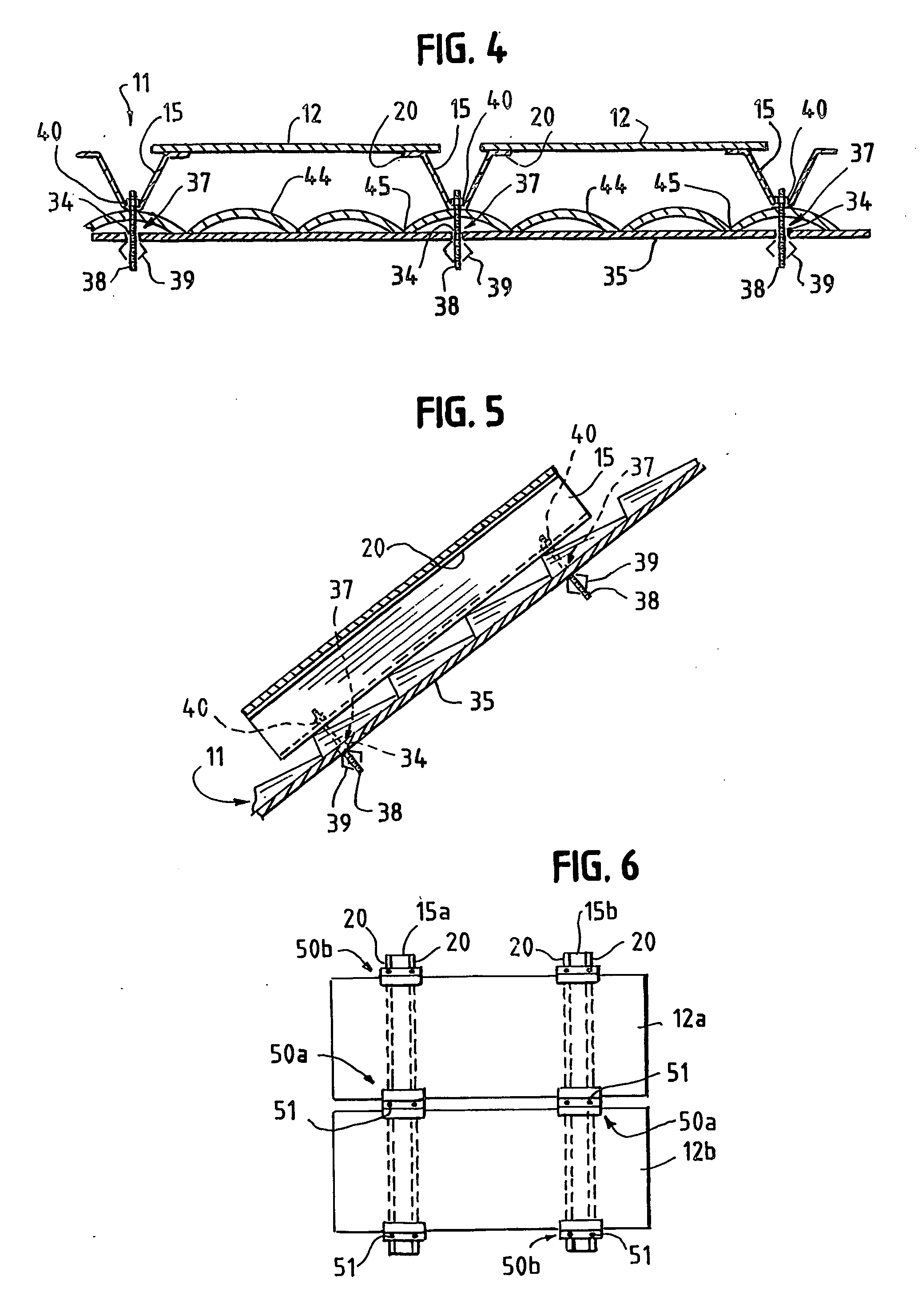Installing a solar panel on a roof
a solar panel and solar energy technology, applied in the field of installing solar energy modules on the roof, can solve the problems of increasing the ultimate affecting the effect of the final cost of the solar energy system, and many prior-art attachment systems often prove inadequate, etc., and achieve the effect of running up and down on the roo
- Summary
- Abstract
- Description
- Claims
- Application Information
AI Technical Summary
Benefits of technology
Problems solved by technology
Method used
Image
Examples
Embodiment Construction
[0031] Referring now to the drawings, FIG. 1 illustrates a typical solar array 10 which has been mounted on a roof 11 in accordance with an embodiment of the present invention. Array 10 is comprised of a plurality (six shown) of solar laminates or modules 12, which have been positioned on and secured to mounting structures (i.e. pans 15 as will be more fully discussed below). As will be understood in the art, a laminate or module 12 (hereinafter “module”) is typically formed by positioning a plurality of photovoltaic cells (not shown) between a sheet of a transparent material (e.g. glass, plastic, etc.) and another sheet of, for example, opaque or transparent material, whereby the finished module is effectively a flat, plate-like structure as shown in the figures. The modules 12 are then positioned so that the photovoltaic cells will be exposed to the sun for converting its solar energy directly into electricity.
[0032] In accordance with the present invention, a unique mounting str...
PUM
 Login to View More
Login to View More Abstract
Description
Claims
Application Information
 Login to View More
Login to View More - R&D
- Intellectual Property
- Life Sciences
- Materials
- Tech Scout
- Unparalleled Data Quality
- Higher Quality Content
- 60% Fewer Hallucinations
Browse by: Latest US Patents, China's latest patents, Technical Efficacy Thesaurus, Application Domain, Technology Topic, Popular Technical Reports.
© 2025 PatSnap. All rights reserved.Legal|Privacy policy|Modern Slavery Act Transparency Statement|Sitemap|About US| Contact US: help@patsnap.com



